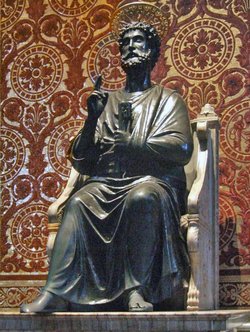Also referred to as “benediction hand”, “Preacher`s hand”, “Papal Hand”, “Pope Blessing hand”, etc. This sign is linked to an ulnar nerve neuropathy, and there is a long time controversy about the name of this sign as well as its etiology, where some authors contend that there may be involvement of the median nerve.
Scholars, books and Internet sites are not clear about it. If there is an ulnar nerve neuropathy the person attempting to open his hand would be left with the second and third digits in extension, while the fourth and fifth digits would be flexed at the interphalangeal joints but extended at the metacarpophalangeal joints due the loss of the function of the interossei muscles and lumbrical muscles of the fourth and fifth digits.
The key for this sign is based in on the blessing act which is performed with an open hand and not with a fist. This is the reason why an ulnar neuropathy and not a median nerve neuropathy is the undelaying cause of the Papal Benediction Sign.
Presumably this term was the result of an injury of Saint Peter’s (the first Pope) ulnar nerve which caused him to bless using the “Preacher’s hand”. It stands to reason that everyone copied him as we can see in the lustrations and the art of the Catholic Church.
Article written by: Prof. Claudio R. Molina, MsC.
Sources:
1. Futterman, B. (2015). Analysis of the Papal Benediction Sign: The ulnar neuropathy of St. Peter. Clinical Anatomy (New York, N.Y.), 28(6), 696–701. Click here for the article
2. "From Vulcan Salute To Papal Blessing, Ulnar Nerve Damage Caused Original Benediction Sign | Box | NYIT". Nyit.edu. N.p., 2017. Web. 14 Jan. 2017
Image by By Mattana [Public domain], via Wikimedia Common: Click here for the link to the original image




